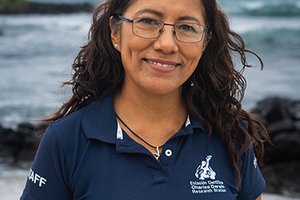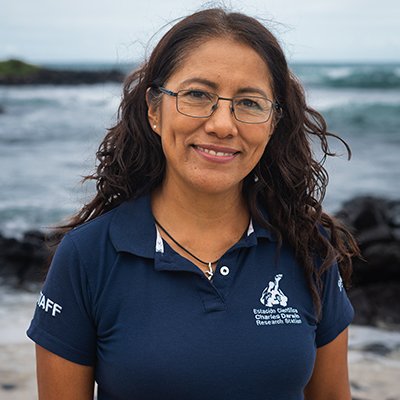Scientists from the Charles Darwin Foundation (CDF), the National Autonomous University of Mexico, Arizona State University and the Geneva Botanical Gardens recently discovered a great diversity of "beard lichen" species belonging to Usnea genus in the Galapagos Islands.
Until before the publication in the Herzogia magazine of the article: “The genus Usnea (Parmeliaceae, Lecanoromycetes) in the Galapagos Islands”, 16 species of lichens of the Usnea genus were known in Galapagos.
In this article, seven species of this genus, known elsewhere in the world, were reported for the first time in Galapagos. As well as the description of 4 new species to science. This implies that now the Usnea genus is represented by 27 different species (Bungartz et al. 2018; Bungartz et al. 2013; Bungartz et al. 2012).
The authors of the publication named one of these four species Usnea patriciana, in recognition of Dr. Patricia Jaramillo Díaz, curator of the Herbarium and general coordinator of the Natural History Collections of the Charles Darwin Research Station in Galapagos, for her contribution to the Galapagos Inventory of Lichens for more than 10 years (Jaramillo et al. 2017a; Jaramillo et al. 2017b; Jaramillo et al. 2017c; Jaramillo et al. 2018; Jaramillo and Bungartz 2007). In addition, another of the new species was named Usnea leana, in honour of the 7-year-old daughter of the main author of the publication.
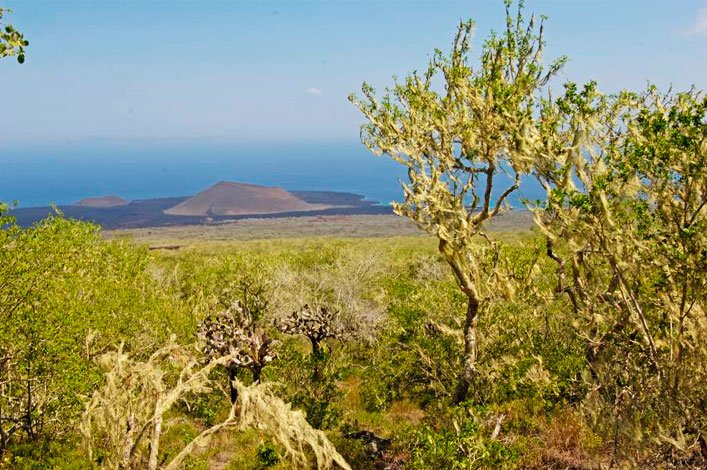
In Galapagos, Usnea is one of the most striking genera of lichens as they are relatively large species that resemble hairs or beards hanging from the branches of trees, although some species are found also in rocky substrates. In the high part of the islands, the hanging species of Usnea typically grow in conjunction with species of the Ramalina genus (R. anceps and R. usnea), forming large and abundant curtains. These curtains, locally known as "old beard", play a very important ecological role for water supply to vegetal communities. Especially in the transition zone, between the dry vegetation of the lower regions and the humid vegetation of the upper part. The lichen curtains are able to trap the abundant fog, known locally as "garúa", which is then condensed and drips into the groundwater. This also provides an important water source for the livestock and human population on the islands.
In the terrestrial part of the islands, lichens persist as the most diverse group of organisms. Thanks to the Inventory of Lichens in Galapagos, knowledge of this ecologically essential group is advancing each year with new publications. Unfortunately, due to the effects of climate change, some lichen species are already threatened. Recently, the endemic species Acantholichen galapagoensis, was classified on the IUCN Red List as vulnerable. This species only grows in the highest and most humid parts of the islands, restricted to habitats exposed to light and high humidity. During the prolonged period of drought in 2015-2016, many populations of Acantholichen collapsed due to the lack of humidity.
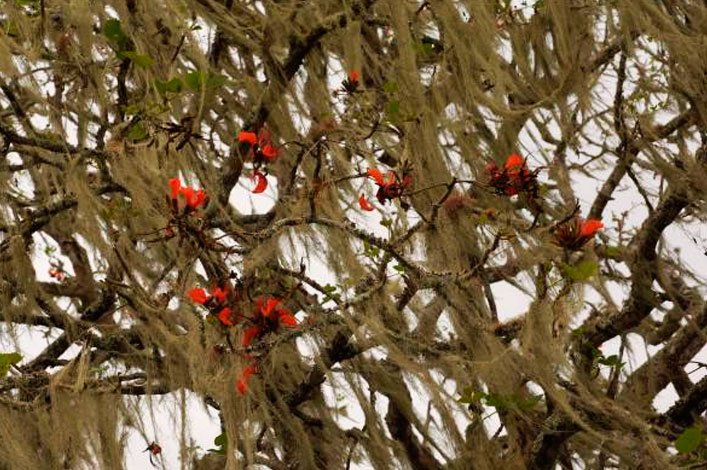
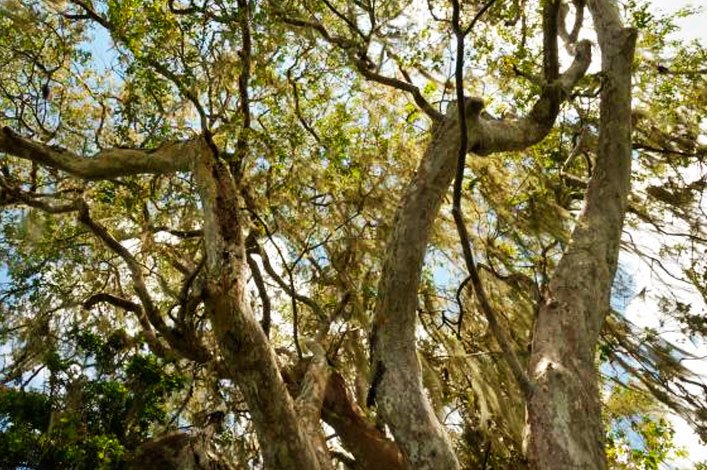
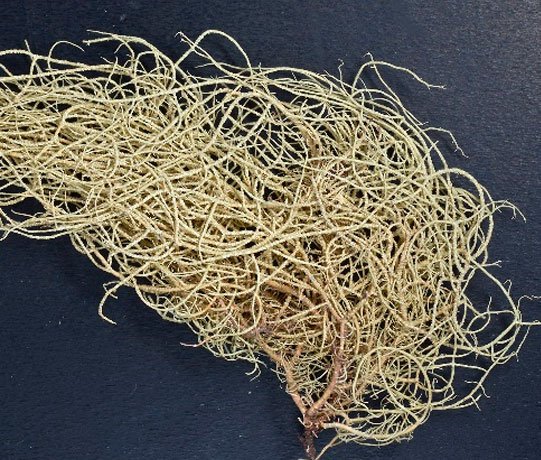
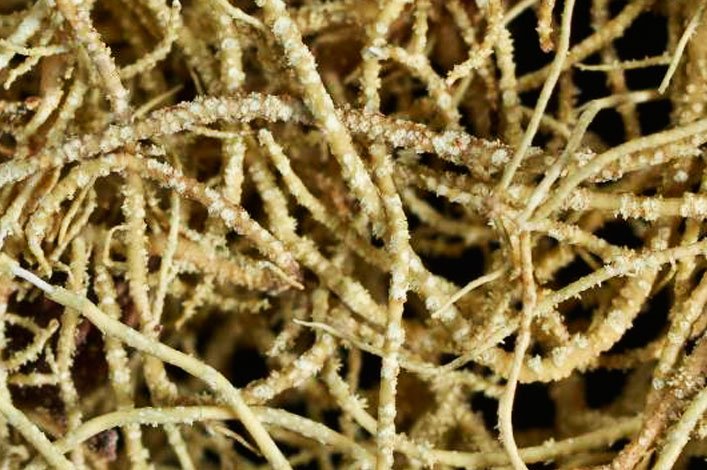
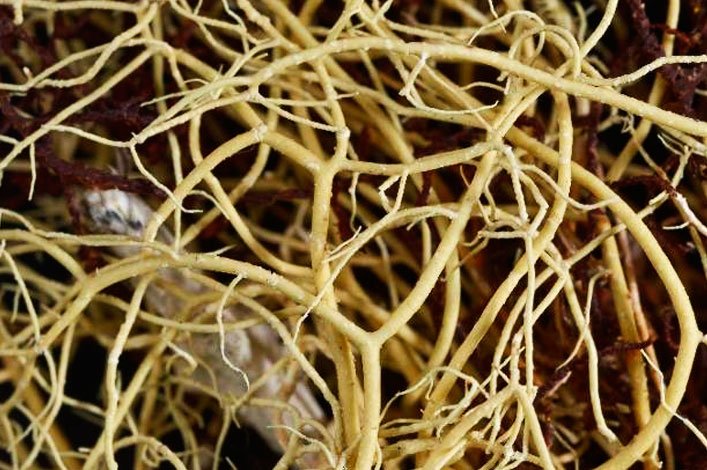
With the Inventory of Lichens in Galapagos, a collaboration between the Charles Darwin Foundation and Arizona State University, it is expected to develop efficient strategies for the protection of these diverse and ecologically essential organisms.
For more information about the research in Galapagos visit our projects.
References:
Bungartz F, Truong C, Herrera-Campos MA, Clerc P (2018) The genus Usnea (Parmeliaceae, Lecanoromycetes) in the Galapagos Islands. Herzogia 31 (1):571–629
Bungartz F, Yánez A, Nugra F, Ziemmeck F (2013) Guía rápida de Líquenes de las Islas Galápagos. Puerto Ayora, Santa Cruz, Galápagos,
Bungartz F, Ziemmeck F, Tirado N, Jaramillo P, Herrera HW, Jiméne-Uzcátegui G (2012) The Role of Science for Conservation. In: Wolff MaG, M. (ed) The Role of Science for Conservation. University of Stirling, UK., UK, pp 119-142
Jaramillo P, Bungartz F (2007) Featured herbarium: CDS - The Charles Darwin Research Station Herbarium. The Vasculum - The Society of Herbarium Curators Newsletter 2 (2):3-7
Jaramillo P, Guézou A, Mauchamp A, Tye A (2017a) CDF Checklist of Galapagos Conifers - FCD Lista de especies de Coníferas de Galápagos. Charles Darwin Foundation Galapagos Species Checklist - Lista de Especies de Galápagos de la Fundación Charles Darwin
Jaramillo P, Guézou A, Mauchamp A, Tye A (2017b) CDF Checklist of Galapagos Ferns and related groups - FCD Lista de especies de Helechos y grupos relacionados de Galápagos. Charles Darwin Foundation Galapagos Species Checklist - Lista de Especies de Galápagos de la Fundación Charles Darwin
Jaramillo P, Guézou A, Mauchamp A, Tye A (2017c) CDF Checklist of Galapagos Flowering Plants - FCD Lista de especies de Plantas con flores de Galápagos. Charles Darwin Foundation Galapagos Species Checklist - Lista de Especies de Galápagos de la Fundación Charles Darwin
Jaramillo P, Guézou A, Mauchamp A, Tye A (2018) CDF Checklist of Galapagos Cycads - FCD Lista de especies de Cicadofitos de Galápagos Charles Darwin Foundation Galapagos Species Checklist - Lista de Especies de Galápagos de la Fundación Charles Darwin





